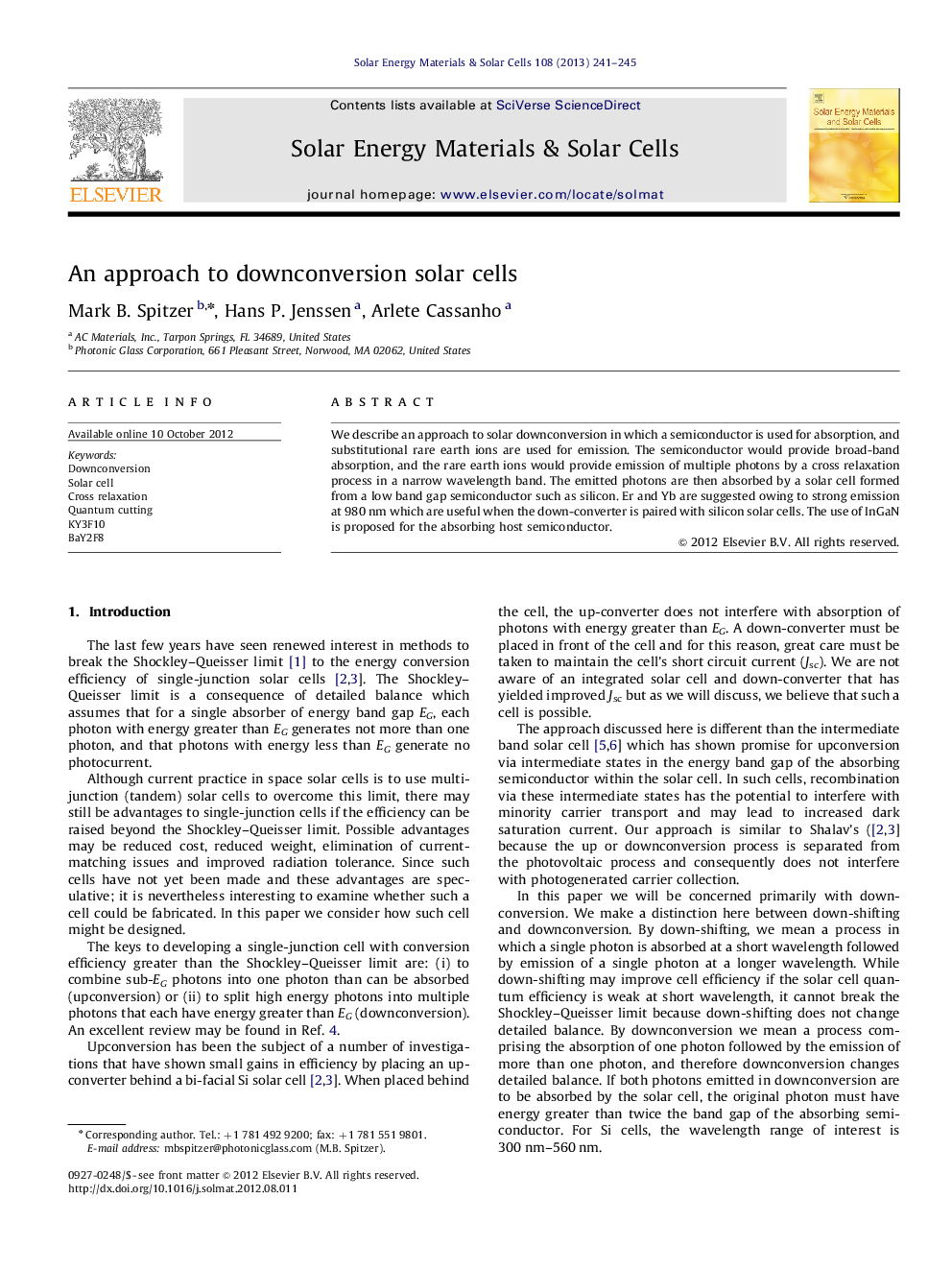| Article ID | Journal | Published Year | Pages | File Type |
|---|---|---|---|---|
| 78705 | Solar Energy Materials and Solar Cells | 2013 | 5 Pages |
We describe an approach to solar downconversion in which a semiconductor is used for absorption, and substitutional rare earth ions are used for emission. The semiconductor would provide broad-band absorption, and the rare earth ions would provide emission of multiple photons by a cross relaxation process in a narrow wavelength band. The emitted photons are then absorbed by a solar cell formed from a low band gap semiconductor such as silicon. Er and Yb are suggested owing to strong emission at 980 nm which are useful when the down-converter is paired with silicon solar cells. The use of InGaN is proposed for the absorbing host semiconductor.
► Er-doped barium yttrium fluoride and potassium yttrium fluoride were grown by the CZ method. ► Transmission and photoluminescence were measured to identify downconversion. ► An approach to fabrication of a downconverting solar cell is discussed.
